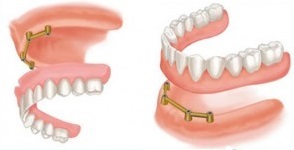
Dental Implant Problems & Causes of Failure
2015-09-12
عفونت کانین فوسا و فضای باکال
2015-09-13Background: It has been shown that smoking habits characterize an increased risk for impaired Osseo integration or bone healing and finally implant failure
Purpose: The aim of this retrospective clinical study was to investigate the impact of cigarette smoking
Materials and Methods: A retrospective analysis was made over a 4 years and 9 months period of the clinical and radiographic findings corresponding to 54 consecutive patients (34 women and
of the clinical and radiographic findings corresponding to 54 consecutive patients (34 women and 20 men) who had received a total of 162 implants. Patients were divided into two groups: Smokers, 20 patients (received 72 implants); and nonsmokers (NS), 34 patients (received 90 implants). Smokers were identified as people smoking >15 cigarettes per day
The success and failure cases were evaluated and studied. The data were analyzed using descriptive statistics and studied. The data were analyzed using descriptive statistics
Results: Four implants out of 162 implants (2.46%) failed and had to be removed
Conclusions: Within the limitations of this study, the results indicated a high success rate 97.5%
(158/162). No real difference in proportion of failure of implant placement both smokers and NS
(P = 0.8577)
Different types of Osseo integrated dental implants have proven to be an effective treatment modality since the second half of the past century (20th century)
Survival rates for the implants are relatively high in normal healthy individuals and nonpathological bone. success rates around 90–95% for endosseous dental implants.v However, the occurrence of failure may be encountered. Because of the growing demand for endosseous implants, their failure is becoming one of the most challenging implant complications of our times
Implant failure is generally defined as the mobility of the implant either in the Osseo integrated period (early failure) or in the postloading period






